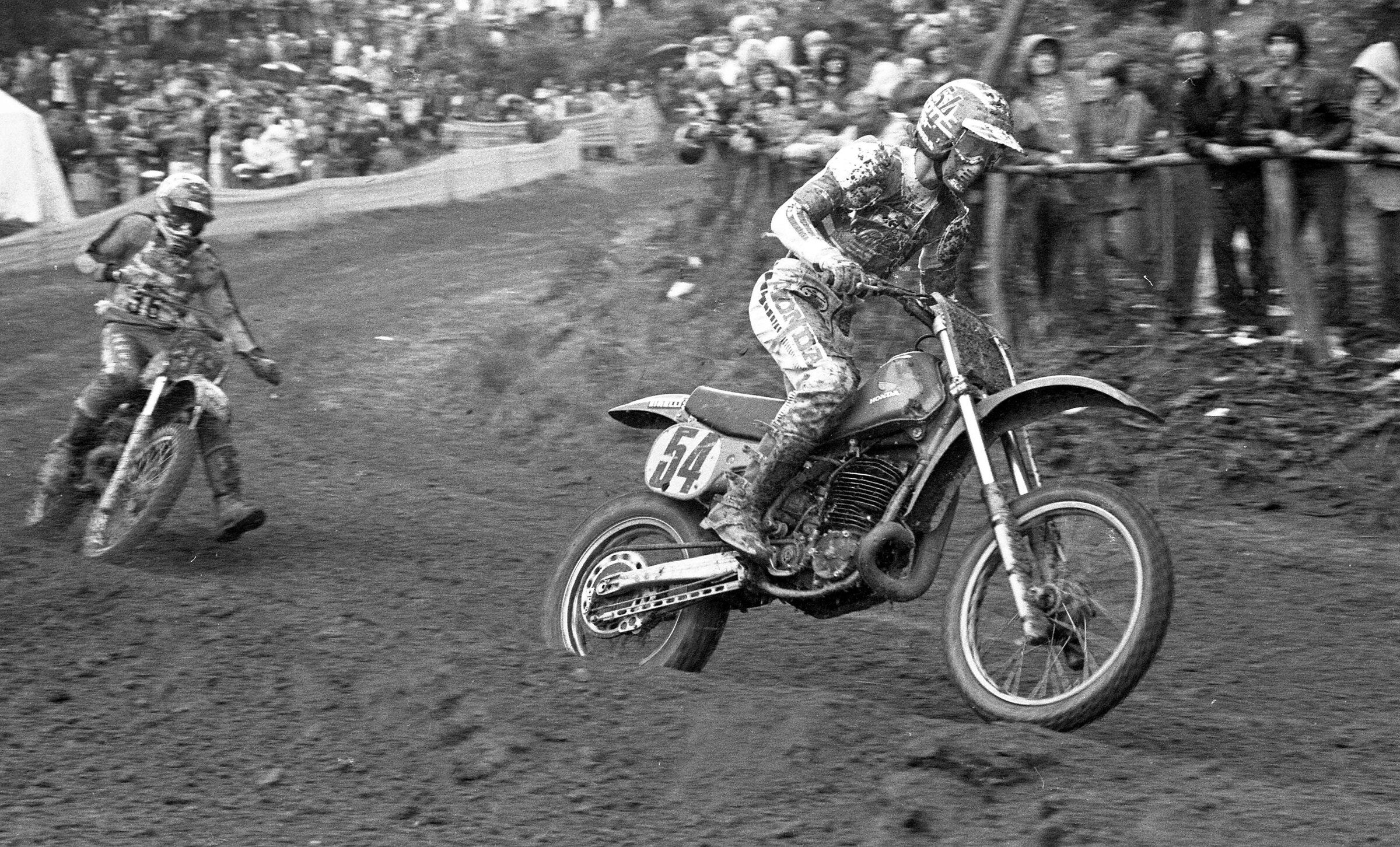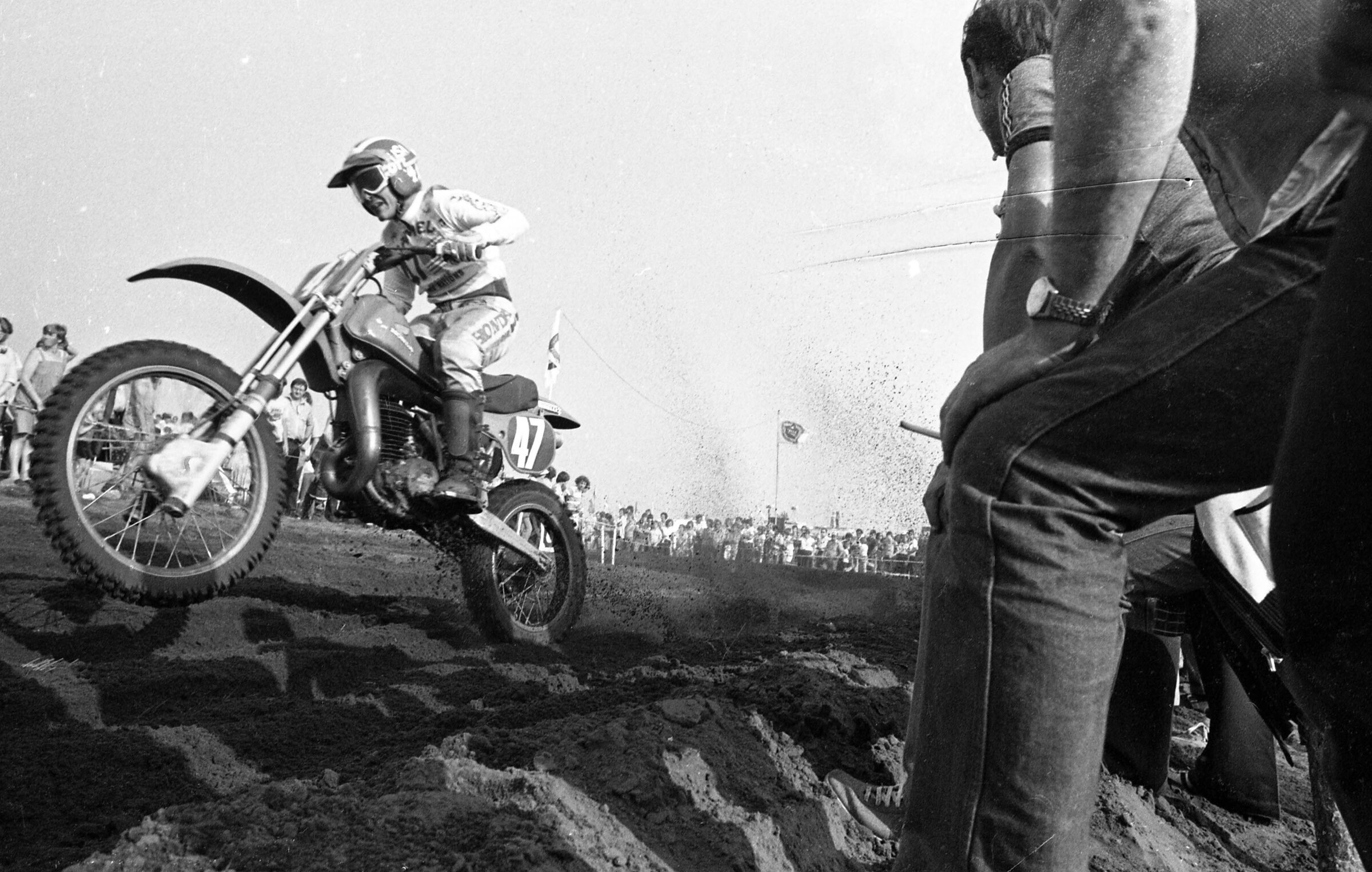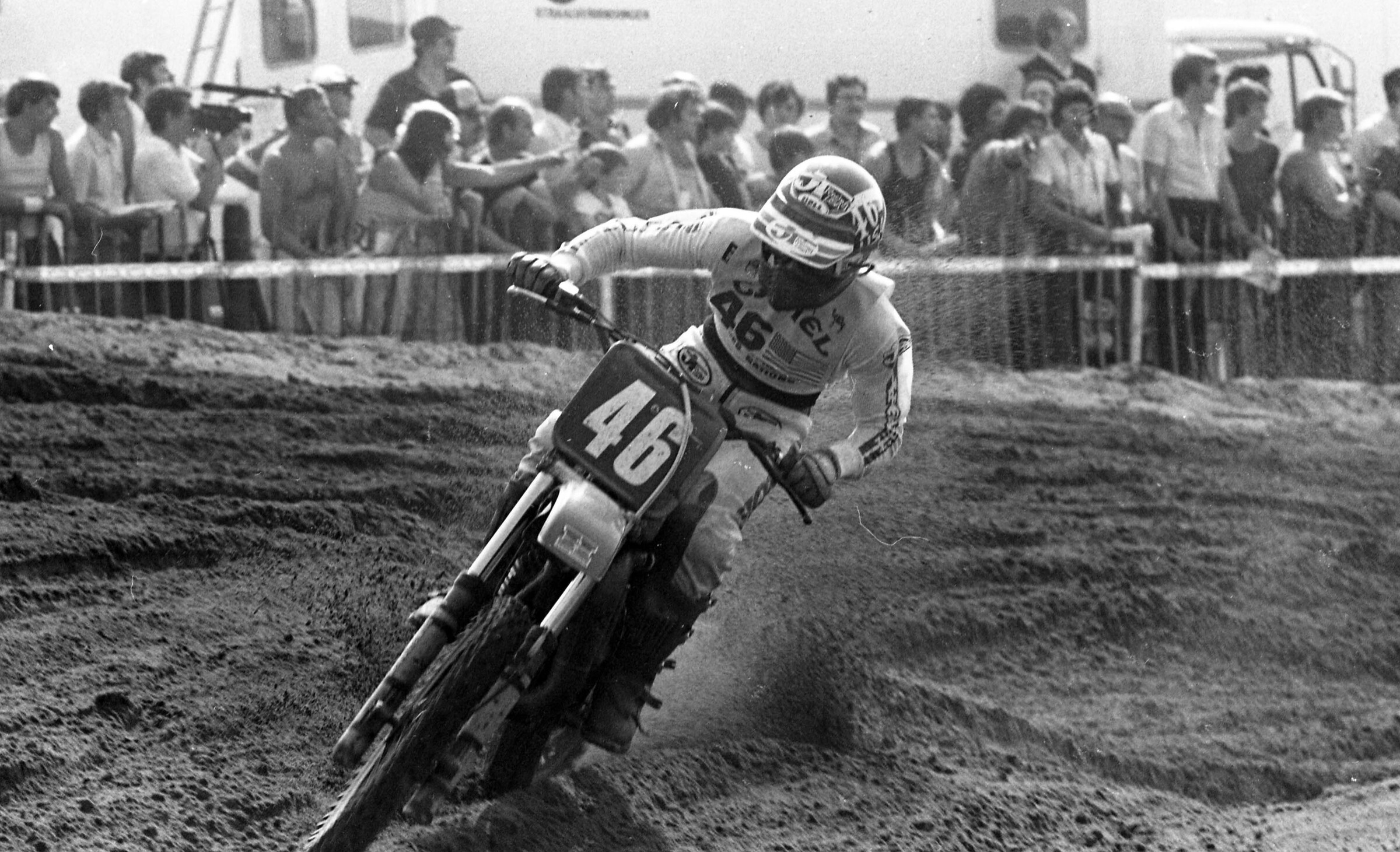We’ve been counting down the days to the 2022 Monster Energy FIM Motocross of Nations, and now it’s finally here. Today, the bikes go hot on the beautiful RedBud MX circuit here in Buchanan, Michigan. The waiting is over. Whether or not this Team USA makes its own history will be decided over the course of three motos. If they win, it will end the longest losing streak in Team USA history, because even after the first time the Americans entered the race officially, back in 1971, it took a full decade to finally win this for the first time. Going back to our last win in 2011, we’ve already surpassed that unfortunate milestone.
And that brings us to the last entry in this countdown of Team USA’s most memorable moments. It takes us back to 1981, and a much different time in motocross…
After a few interesting but largely unsuccessful attempts at the old Motocross (500cc) and Trophee (250cc) des Nations, as they were called back then, interest among the top U.S. riders began to wane. Sure, it would be great to beat the Belgians, or the Russians, the Czechs. It would also be great to beat the big dogs of the time: Roger De Coster, Heikki Mikkola, Gerrit Wolsink, Gennady Moiseev, Jaroslav Falta… But we kind of already were, just not at the Trophee or MXoN. We’d had almost all of our “first American” moments in motocross, courtesy of the like of Jim Pomeroy, “Jammin” Jimmy Weinert, Marty Smith, Gary Bailey, Marty Moates, and more. Bob Hannah was taking the fight to Roger De Coster at the Trans-AMA Series every year, and the U.S. market was growing quickly due to this shiny new thing called supercross. Going to Europe for a fortnight to race the Europeans on their home soil just wasn’t as important as it used to be, unless you committed to it full time, which is exactly what Brad Lackey and Pomeroy did.
And then despite a very game effort at the ’78 Nations by Hannah to beat Mikkola, America’s best rider at the time decided to stay home in 1979 (before the leg-shattering water-skiing accident that knocked him out for an entire year). That in turn caused other dominos to fall, as top riders decided to pass on Team USA too. It got to the point where we could not even field a team in 1979, and then again in 1980.
It was at that point that a few industry friends who knew how important the MX and Trophee des Nations really were in the whole big scheme of things started to work together. Bel-Ray’s J.J. Hanfield, Hi-Point’s Larry Maiers, JT Racing’s John Gregory and Motocross Action editor Dick Miller all decided to join forces and try to get Team USA back out there. They campaigned to the riders, pledged money, raised money and just put the idea front and center. But they still seemed more interested in supercross, which by that point had knocked the Inter-Am Series out completely, and had the Trans-AMA/USA Series losing prestige by the year.
That’s right about the time that Roger De Coster, Dave Arnold, and Team Honda entered the picture. De Coster had retired the previous year, after five 500cc world titles, and moved to America to work with Honda. No one knew the importance of the race better than De Coster, who had been on 16 winning versions of Team Belgium as a rider. Honda had four young riders at the time: Donnie Hansen, Danny Laporte, Johnny O’Mara and Chuck Sun. Between the four of them only LaPorte and Sun had won anything as professionals—LaPorte was the ’79 AMA 500cc Champion and Sun won the same title in 1980. No matter, they committed to go to the two races in Belgium and Germany, reviving Team USA after two years of being no-shows on the biggest stages in European motocross.
Fast forward to sandy Lommel, Belgium, site of the first race, which was the Trophee des Nations for 250s. They all wore matching white JT Racing gear, their matching red bikes sequentially numbered #46 (Sun), #47 (LaPorte), #48 (O’Mara), and #49 (Hansen). The Europeans did not seem one but impressed, probably because they’d never heard of them. They thought of them as a “B team.” Forty minutes and two laps later, the Europeans were trying to figure out what the hell had just happened, as the Americans finished 2-3-4-8 in the first moto. Only Belgian sandmaster Andre Vromans had managed to beat them.
The second moto was practically a repeat of the first. Vromans again won, but the Americans went 2-3-6-11. Throwing out the two worst moto scores, Team USA totaled 20 points. The mighty Belgians, the home team and heavily favored, had nearly double the score at 37. Just like that, Team USA was on top of the world.
But was it a fluke?
One week later everyone switched to 500cc equipment, and the venue went from sandy Lommel to hard-packed Bielstein. There was no way the Europeans would be caught by surprise again. Despite the fact that O’Mara had never even raced a 500 before, the young Americans were confident they could do it again. They would wear #53 (Sun), #54 (O’Mara), #55 (LaPorte), and #56 (Hansen).
The two motos that followed were much closer in Germany than they were in Belgium. This time it was Sweden’s Hakan Carlqvist who won both motos. But as a team the Americans were simply better, starting fast, riding consistently and getting the job done, albeit by a single point to the David Thorpe-led British. This time, just like that, the global balance of power in the motocross world shifted across the Atlantic.
The ’81 Team USA wins were followed by more American successes on the global stage. They would repeat as both Motocross and Trophee des Nations champions in 1982, ’83, and ’84. And after ’82 all of the OEMs wanted to participate. That same year both Brad Lackey (500) and Danny Laporte (250) would win America’s first FIM World Motocross Championships. When the two Nations events were combined in 1985 and reformatted to only include each country’s three best riders, Team USA just kept on winning. It would stay at the very top for 13 straight years, a remarkable run for any champion in any sport. It all started with that one long, great week that was Team USA in 1981, the single greatest moment in American motocross history.


























